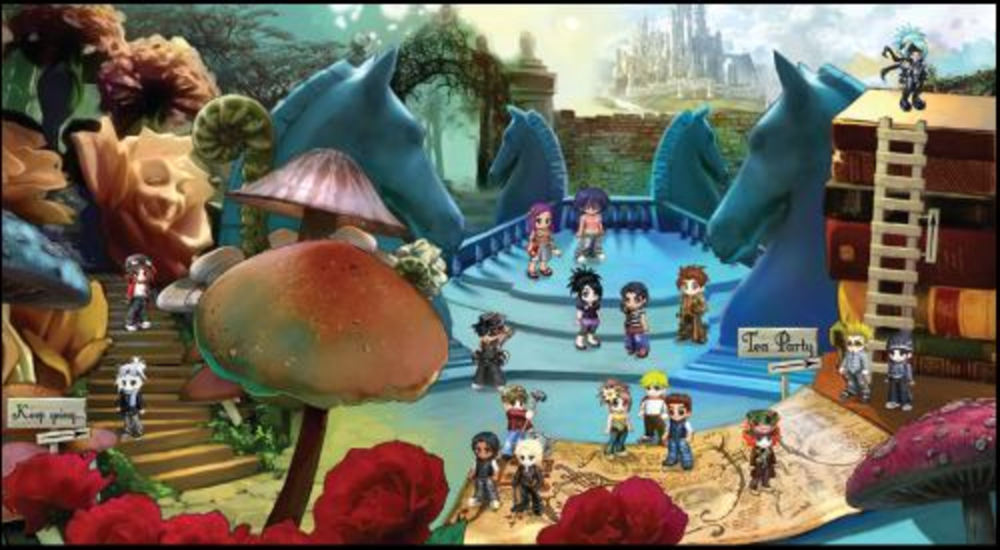When it comes to establishing a dialogue with tweens and teens, the talk is tough and full of more “don’ts” than “dos,” with marketers admonished don’t talk down to them, don’t talk at them and most important, don’t try to talk like them.
It’s a road rife with pitfalls, but also rich in opportunity with the approximately 35 million teens in the US controlling an estimated $208 billion in largely disposable income, according to Packaged Facts.
One key for drug chain Rite Aid in building successful conversations comes in how it segments the market, allowing for custom-tailored dialogue.
Rite Aid’s youth focus is 10- to 12-year-olds, 13- to 15-year-olds and then 16- through 19-year-olds, the latter the all-important, have-license, can-drive segment.
Joann Tyson, president of Cosmetic Promotions, which partners with Rite Aid for tween and teen promotions, says one of the most important aspects, particularly with the youngest segments, is partnering with and getting the “permission” of parents.
“The tweens totally want what the teens want,” Tyson adds. “We learned a long time ago don’t try making something specifically for them because they don’t want to be treated any differently than the teen. But at the same time, you have to always be mindful of the age difference, however slight.”
Jason Yim, president and executive creative director of Trigger, also segments the youth market.
For instance, when it comes to gaming, Yim says younger kids like minigames where it’s easier to score quickly and advance and build collections, whether it be items for their characters, furniture for their apartments or clothes for their virtual closets, so they can show their friends.
“But that changes and very quickly,” Yim says.
“They get just a little older and then all of a sudden they want challenging, more difficult games.”
Besides segmenting, another key, experts say, is to take a stop-talking-and-listen approach.
“You don’t get many chances with them, and they really sense if you’re pushing a brand on them and will rebel,” says Chris Davis, senior VP of global sales for Gaia Online.
Case Studies
Acquisition and Retention: Rite Aid
Rite Aid wanted to reach out to engage girls ages 13 to 19 with its Glam Camp programs, comprised of sampling, gift with purchase and in-store events.
The campaign, conducted last year and in place again this year tied to the back-to-school season, is promoted through websites, e-mail blasts and Rite Aid’s August and September circulars, a two-page ad in the September issue of
Seventeen, as well as through Rite Aid’s rebate atalog. Additionally, brand ambassadors give away Glam Camp tote bags filled with beauty products and bounce-back coupons at events, including the Miss Teen Ohio-World Pageant and tickets to a Taylor Swift concert.
Seventeen is also promoting the gift with purchase via its website and through e-mail blasts.
Last year, the Glamcamp.com website had more than 9,000 hits and 33,000 page views from August through November. Additionally, back-to-school in-store demos resulted in more than 2,000 pieces sold, and the target audience redeemed 15,000 Glam Camp bags through its in-store events.
Cosmetic Promotions president Joann Tyson ays that while teen girls are the primary target, Rite Aid specifically wants to reach the ones who are old enough to drive.
“What we’re looking for is to create a conversation with the teens who drive (in that time before they go to college) and are starting to learn about saving money and how important that is, and how Rite Aid can help them do that,” Tyson says. “At the same time, it’s important to have that parental support when you target their teens.”
Rite Aid spokesman and PR specialist Eric Harkreader adds that it’s important to stay relevant to the teen audience.
“Anytime you’re speaking to a market segment you want to be sensitive to the language and interests,” Harkreader says. “There’s a reason we picked Taylor Swift. We didn’t pick a name out of a hat.
Acquisition and Retention: Gaia Online
Gaia Online wanted to reach out to its audience of 13-to-24-year-olds — 53% of whom are 13 to 17 years old — by developing a highly integrated, interactive way to draw them into the upcoming release of Alice in Wonderland for its client Disney.
Beginning in February, during the lead up to the March release of the movie, Gaia Online scattered tens of millions of “rabbit holes” around the site. Users clicked on a rabbit hole, which took them to a flash experience with their avatar. The avatar then drank a potion, which brought them to Wonderland where they interacted with Alice and other users. Once there, they had the opportunity to earn the Mad Hatter’s hat. (The same style the actor Johnny Depp wore in the movie.)
The campaign had a better than 5% click-through rate from the Alice in Wonderland profile page on Gaia to the movie’s website. There were nearly a million trailer views in a three-week period and more than 400,000 Madhatter hats given out. To receive the hat, users had to successfully mimic 10 expressions on Alice’s face.
“On most sites, integration and interaction like that is just not possible,” says Gaia’s Chris Davis, senior VP of global sales. “We look for partners that help us seamlessly integrate the brand so that it adds value to the experience of our users, not just something that’s in their face.”
Davis says Gaia always keep authenticity top of mind as well as developing complex levels of integration.“ That integration is rewarding because it leads to more time on the part of the user spent interacting with the brand,” he says.
Gaia is now working with Coca-Cola Co. which is sponsoring a summer event that will culminate in the creation of a flash hangout







